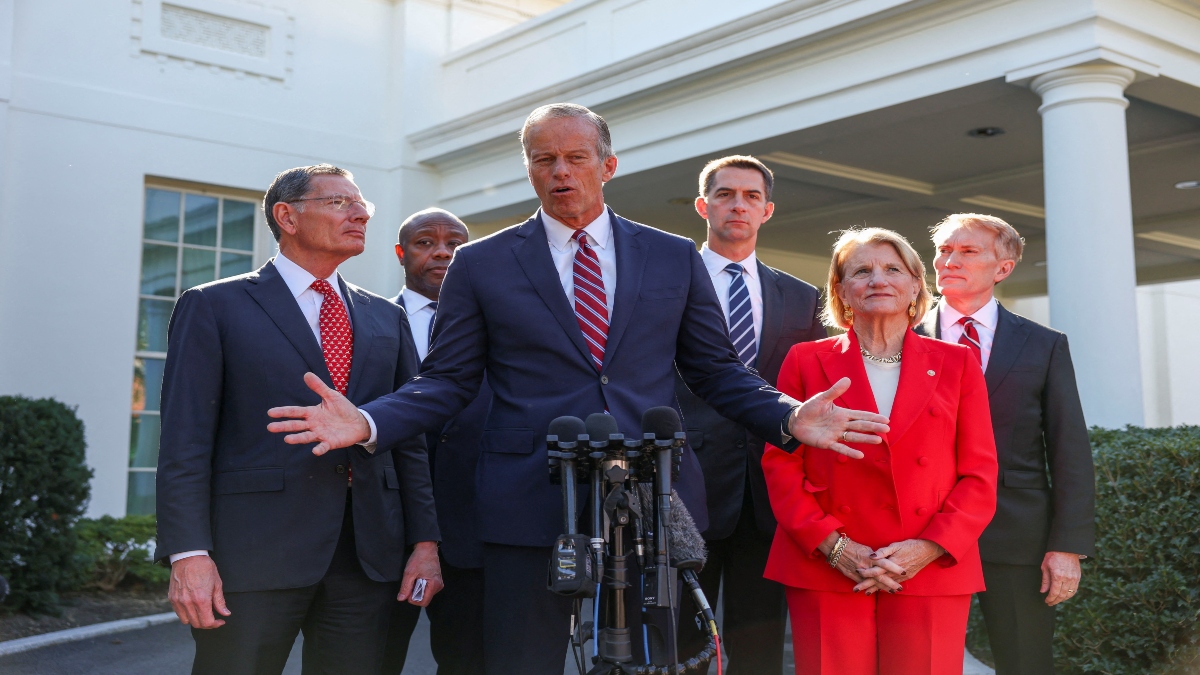The longest shutdown in US history is poised to come to an end.
Seven Senate Democrats and one Independent have joined the 52 Republicans in voting to reopen the federal government till January 2026.
Though the Democrats did not get the desired extension of the Obamacare subsidies, the Trump administration has promised a vote on that in the future. Meanwhile, the administration has vowed to reverse the firings of hundreds of thousands of federal workers and give them back pay.
While one major hurdle has been cleared, several others remain for the shutdown which began on October 1 to completely come to an end. But what happens next? What does the path to reopening look like? When will the shutdown end?
Let’s take a closer look.
What happens next
The US Senate now needs to vote on the final version of the bill , known as a continuing resolution and spending package. How quickly this happens depends on whether the Senators want to do it quickly or have a long, drawn-out battle. This is because there are several procedural hurdles involved, including 30 hours of post-cloture debate time. These cannot be waived without all one hundred senators unanimously agreeing to do so.
This could be a challenge. Kentucky Senator Rand Paul, for instance, wants to vote on an amendment about hemp grown in his state. Paul had opposed the continuing resolution.
“Just to be clear: I am not delaying this bill,” Paul wrote on social media. “The timing is already fixed under Senate procedure. But there is extraneous language in this package that has nothing to do with reopening the government and would harm Kentucky’s hemp farmers and small businesses. Standing up for Kentucky jobs is part of my job.”
Senate Majority Leader John Thune said it “remains to be seen” when the Senate will vote. He said he hoped it would pass early this week.
“They’ll need unanimous consent from all senators to fast-track their final vote,” Speaker Mike Johnson explained. “As you know, there are some procedural hurdles that one or more could throw in the way, but we certainly hope that they won’t do that, because so many people across this country are desperate for the government to reopen.”
CR in House
Once this continuing resolution has passed, the bill will then move to the House. Speaker Johnson had dismissed the House of Representatives and sent his members home when the shutdown began in October. The House is currently slated to meet at noon on Wednesday.
Now, US representatives from all over the country will begin making their way back to Washington . He said he will try to move as quickly as possible after the Senate vote.
“We’ll give a 36-hour formal and official notice so that we can vote as soon as possible to pass the amended CR bill and get it to the President’s desk,” Johnson said.
This won’t be easy given that the Republicans hold a razor-thin majority in the House of Representatives. Holdouts like Republican Representative Thomas Massie of Kentucky, for instance, have proved particularly intransigent against reopening the government for the short term. Massie, who has been demanding that the Epstein Files be released, has become a fierce critic of the White House.
Trump will likely have to cajole and cow some of the more belligerent members of the Republican caucus and perhaps even some Independent-leaning Democrats into voting for the bill. Republicans will likely target Representative Jared Golden of Maine and Henry Cuellar of Texas.
“It’s past time to put country over party and get our government working again for the American people,” Cuellar wrote on social media Sunday.
However, this is sure to be an uphill task in the House, with Minority Leader Hakeem Jeffries vowing to fight the package tooth and nail. Democrats in the House were set to hold a meeting to chalk out the strategy going forward on Monday.
However, a source told CNN that the Republicans are upbeat about the continuing resolution’s chances in the House. A Democratic source added that some in the party will inevitably vote for the funding bill, though how many will do so remains an open question.
Which means that even if the Senate manages to do its work on Monday or Tuesday – which is unlikely – the House will need to reconvene on Wednesday and Thursday and try to pass the continuing resolution.
After the House passes the bill, it will then be sent to Donald Trump for his signature. That will likely happen immediately.
Trump has said he is looking to end the shutdown “very quickly.” “We have support from enough Democrats, and we’re going to be opening up our country,” he added. “I’ll abide by the deal. The deal is very good.”
When will the shutdown end?
It could take as long as the end of this week for the government to begin reopening.
However, as those who have worked in government have often said, trying to navigate government is akin to turning an aircraft carrier. It can only be done slowly and methodically. Which means that it is possible that the government will not fully begin to reopen until next week. Which in turn means further delays for millions of Americans relying on the US government.
Regardless, House Speaker Mike Johnson displayed optimism about the turn of events. “It appears to us this morning that our long national nightmare is finally coming to an end,” Johnson told reporters on Monday. “We look forward to the government reopening this week so Congress can get back to our regular legislative session,” he added. “Shutting down the government never produces anything. It never has.”
With inputs from agencies
)